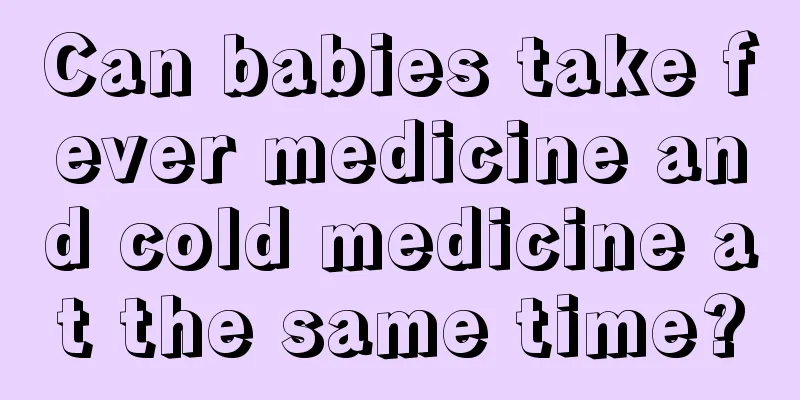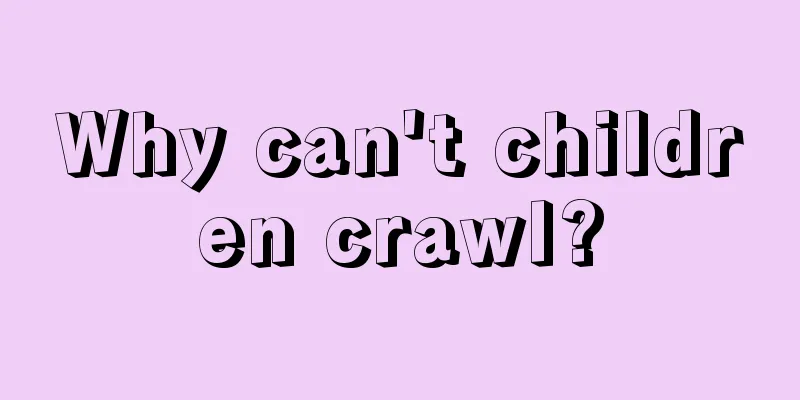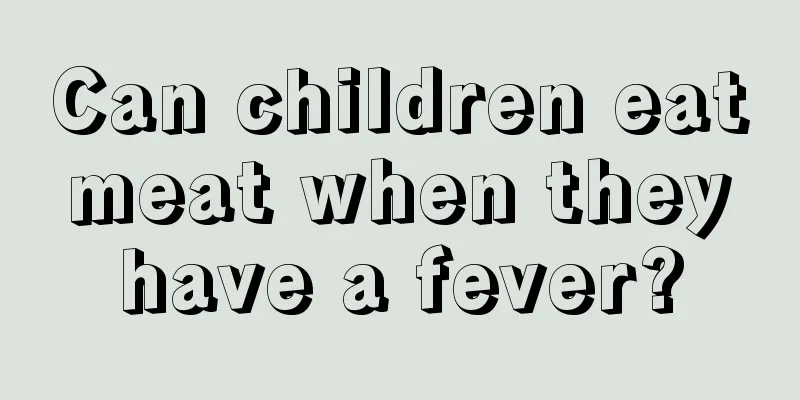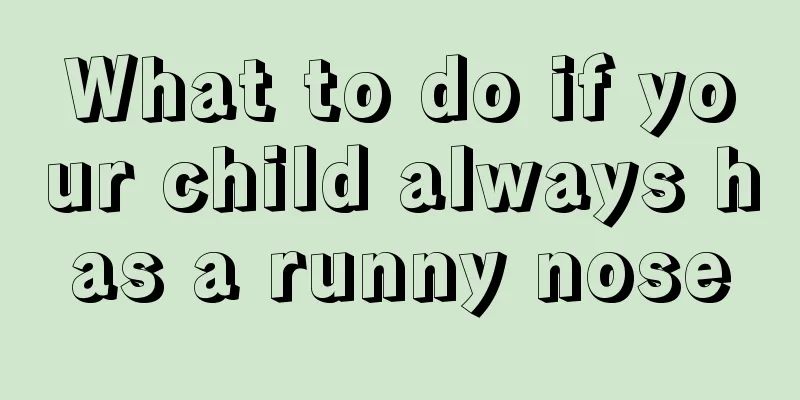Can babies take fever medicine and cold medicine at the same time?

|
When the baby's body is hot, parents should pay attention to whether the child has a fever, and take the baby to the hospital to check whether the baby has a cold. If it is just a fever, physical cooling methods can be used to relieve the condition. If the fever is caused by a cold, it should be treated with medication. So, can babies take fever medicine and cold medicine at the same time? Antipyretic drugs include ibuprofen and acetaminophen. Children's Aminocaprofen Granules are cold medicines, which contain antipyretic ingredients. If these two drugs are taken at the same time, the dosage of the antipyretic drug will be increased. The current body temperature is 38.5°. It is recommended to take oral antipyretic drugs, but not oral cold medicines. If you do take oral cold medicines, it is best to take them at least four hours apart. 1. Treat the primary disease Fever is a manifestation of disease, not an independent disease. Therefore, when treating children's fever, we should not simply focus on reducing the fever, but should actively look for the cause of the fever and treat the primary disease. 2. Antipyretic treatment Children with persistent high fever need appropriate cooling measures to avoid brain cell damage and possible adverse effects due to excessively high body temperature. It is especially necessary to take cooling measures in a timely manner for children with a history of febrile convulsions and children with high fever and extreme irritability. The following conditions in children with fever require vigilance or emergency treatment: febrile convulsions; fever in infants under 3 months old; fever lasting more than 5 days; fever > 40°C and cannot be effectively reduced within 2 hours by acetaminophen or ibuprofen; obvious changes in children's behavior: such as not liking to play, loss of appetite, rarely talking, indifference to surrounding things, or sudden special behavior that has never appeared before; less urine, indicating dehydration, such as infants wet < 3 diapers a day, or older children have not urinated for 8 to 12 hours. 3. Common cooling measures include: (1) Physical cooling: Warm water bath, ice cubes in a waterproof plastic bag wrapped in a dry towel and applied to the head and neck, and also to the armpits and groin. It is not recommended to use cold water or alcohol for bathing. (2) Drug-induced fever Acetaminophen (for children > 3 months old) or ibuprofen (for children > 6 months old) are commonly used, either orally or rectally, and can be used every 4 to 6 hours. Aspirin should be used with caution in children (it can cause Swiss syndrome). The use of hormones alone to reduce fever is generally not recommended. It is not advisable to use drugs to reduce fever in newborns because their body temperature regulation function is not yet fully developed. (3) Traditional Chinese medicine for cooling down: acupuncture, oral administration, external application or enema of traditional Chinese medicine, and massage. (4) Artificial hibernation therapy It is a cooling method that combines drugs (chlorpromazine and promethazine mixed in equal amounts) and physical cooling. Artificial hibernation has a powerful protective inhibitory effect on the central nervous system, which can make the body fall asleep, lower the temperature, reduce the metabolic rate and oxygen consumption. It is mainly suitable for patients with persistent high fever or convulsions caused by severe infection, such as toxic bacterial dysentery, viral encephalitis, purulent meningitis, etc. 4. Other symptomatic supportive treatments (1) Provide a comfortable cooling environment. Place the child in a quiet, cool, well-ventilated environment. The child should wear cool and breathable clothing. Do not cover the child with a blanket to induce sweating. (2) Replenish water and electrolytes in time to maintain smooth bowel and bladder function. (3) Provide children with nutritious, light, and easily digestible food. |
<<: What medicine should children take for lymphadenitis?
>>: What to do if a child has tonsillitis and a high fever
Recommend
What causes children’s feet to become dry and cracked?
Every winter, the feet will become dry and peelin...
What is the diet for babies after weaning?
Generally, our babies will face weaning when they...
Education of a 3-year-old
The education of 3-year-old children is a topic t...
How to stop cough for three-month-old baby
Three-month-old babies have weak resistance and w...
How to make sesame paste for babies
A complete guide to making sesame paste for babie...
The newborn's belly button has not fallen off for more than 20 days
We all know that when the baby is in the mother&#...
What are the red spots on the baby's face?
What should you do if your baby has red spots on ...
Why do children start talking late?
Raising a baby is a very happy thing, especially ...
Why does my baby suddenly stop drinking breast milk?
If the baby suddenly stops drinking breast milk, ...
What is the cause of excessive saliva secretion in children?
Everyone secretes a certain amount of saliva ever...
When should children's supernumerary teeth be extracted?
Dental health is a very important matter. Many pe...
What are the causes of precocious puberty in girls?
Nowadays, many young girls will show the characte...
Newborn baby's white eye has red bloodshot
Having a baby is a very happy thing. Raising a ch...
Baby's face has acne and pus
Children are generally not prone to acne before t...
What to do if your baby has a protruding spine
Spinal herniation is a common disease among worki...









